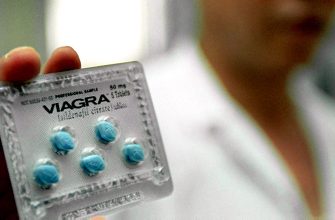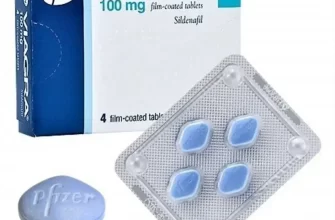The clinical name for Viagra is sildenafil citrate. This is the name used in medical settings and on prescription labels, differentiating it from the brand name marketed to consumers.
Understanding this distinction is crucial. While “Viagra” is widely recognized, healthcare professionals universally employ the generic name, sildenafil citrate, ensuring clear communication and avoiding potential confusion with other medications. This precision is particularly important when discussing drug interactions or alternative treatments.
Remember, many medications contain sildenafil citrate, though under different brand names. Knowing the clinical name helps you easily identify the active ingredient regardless of branding. This information empowers you to make informed decisions and discuss treatment options with your doctor effectively.
- Clinical Name for Viagra
- The Chemical Name of Sildenafil Citrate
- Understanding the Structure
- Key Structural Features and Their Roles
- Chemical Formula
- Understanding Sildenafil’s Role in Erectile Dysfunction
- Viagra’s Brand Name vs. Generic Alternatives
- Prescribing Information and Dosage for Sildenafil
- Potential Side Effects and Drug Interactions of Sildenafil
- Common Side Effects
- Less Common but Serious Side Effects
- Drug Interactions
- Important Note:
Clinical Name for Viagra
The clinical name for Viagra is sildenafil citrate. This is the active pharmaceutical ingredient responsible for Viagra’s effects.
Pharmacists and doctors use this name when prescribing or dispensing the medication. You’ll find sildenafil citrate listed on the packaging and in patient information leaflets.
Sildenafil citrate is available under various brand names globally, with Viagra being one of the most well-known. Understanding this distinction is key; while Viagra is a brand name, sildenafil citrate denotes the actual drug itself.
Generic versions of Viagra, containing sildenafil citrate, are also widely available, often at a lower cost than the branded medication. These generics are bioequivalent to Viagra, meaning they provide the same therapeutic effect.
Always consult your doctor or pharmacist before using any medication, including sildenafil citrate. They can help determine the appropriate dosage and address any potential drug interactions or health concerns.
The Chemical Name of Sildenafil Citrate
Sildenafil citrate’s chemical name is (6R,12aR)-6-methyl-2,3,6,7,12,12a-hexahydro-2-methyl-6-(1-methyl-7-nitro-1H-indol-3-yl)-pyrazolo[4,3-b][1,4]benzodiazepine-1,4-dione.
Understanding the Structure
This lengthy name reflects the complex molecular structure of sildenafil citrate. It’s a heterocyclic compound, meaning it contains atoms from multiple different elements arranged in a ring structure. Key components include pyrazolo[4,3-b][1,4]benzodiazepine and nitro-indol rings.
Key Structural Features and Their Roles
Specific functional groups within this structure contribute to sildenafil’s action as a phosphodiesterase-5 (PDE5) inhibitor. The nitro group, for example, plays a critical role in the drug’s interaction with PDE5.
| Functional Group | Role |
|---|---|
| Nitro group | Essential for PDE5 binding |
| Pyrazolo[4,3-b][1,4]benzodiazepine ring system | Contributes to overall molecular shape and interaction with PDE5 |
| Methyl groups | Influence pharmacokinetic properties (absorption, distribution, etc.) |
Chemical Formula
The chemical formula is C22H30N6O4S. This formula provides a concise summary of the elemental composition.
Understanding Sildenafil’s Role in Erectile Dysfunction
Sildenafil, the active ingredient in Viagra, treats erectile dysfunction (ED) by increasing blood flow to the penis. This happens because sildenafil inhibits an enzyme called phosphodiesterase-5 (PDE5).
PDE5 normally breaks down a chemical called cyclic guanosine monophosphate (cGMP), which plays a crucial role in penile erection. By blocking PDE5, sildenafil allows cGMP levels to rise, leading to increased blood flow and facilitating an erection in response to sexual stimulation.
It’s important to note that sildenafil doesn’t cause erections spontaneously. Sexual stimulation is still required to trigger the process. The medication simply enhances the body’s natural response.
Sildenafil is generally well-tolerated, but potential side effects include headache, flushing, nasal congestion, and visual disturbances. A doctor can discuss these risks and potential drug interactions before prescribing it.
Dosage varies depending on individual needs and response. Your doctor will determine the appropriate dose for you.
Sildenafil is a common and effective treatment for ED, but it’s not suitable for everyone. Men with certain heart conditions, low blood pressure, or other health concerns should consult their physician before taking it.
Viagra’s Brand Name vs. Generic Alternatives
Choose Viagra (sildenafil citrate) if you prioritize brand recognition and consistent quality control. Pfizer, the manufacturer, maintains rigorous standards throughout the production process.
Opt for a generic sildenafil if budget is a primary concern. Generic versions contain the same active ingredient as Viagra and are subject to FDA approval, ensuring they meet safety and efficacy standards. Expect slight variations in inactive ingredients, which rarely impact effectiveness.
Consider factors such as price, your comfort level with brand-name medications, and the specific needs of your prescription when deciding. Always discuss options with your doctor to determine the best choice for your individual circumstances.
Generic sildenafil typically costs significantly less than Viagra, potentially saving you considerable money over time. This cost difference stems from the lack of extensive marketing and research and development expenses associated with brand-name drugs.
Both brand-name Viagra and generic sildenafil offer comparable efficacy for erectile dysfunction treatment. Clinical trials support the effectiveness of both. Consult your physician to discuss potential side effects and interactions with other medications.
Prescribing Information and Dosage for Sildenafil
Sildenafil, the active ingredient in Viagra, is available in various dosages, typically ranging from 25mg to 100mg. Your doctor determines the appropriate starting dose based on your individual health status and medical history. Begin with a lower dose and adjust as needed, following your physician’s guidance.
Typical Starting Dose: Many physicians initiate treatment with a 50mg dose taken approximately one hour before anticipated sexual activity.
Dosage Adjustments: If 50mg proves insufficient, your doctor might increase the dosage to 100mg. Conversely, if side effects are experienced, a reduction to 25mg may be recommended. Do not exceed 100mg per day.
Important Considerations: Sildenafil’s effectiveness can be influenced by factors such as food intake and certain medications. Your doctor will advise you on potential interactions and provide further guidance regarding appropriate usage.
Frequency of Use: Sildenafil is not intended for daily use. It is typically taken as needed, prior to anticipated sexual activity.
Missed Dose: If you miss a dose, take it as soon as you remember, provided sexual activity is still anticipated. Avoid taking more than one dose within 24 hours.
Storage: Store Sildenafil at room temperature, away from moisture and direct sunlight.
Disclaimer: This information is for educational purposes only and does not substitute for professional medical advice. Always consult your doctor before starting or changing any medication.
Potential Side Effects and Drug Interactions of Sildenafil
Sildenafil, the active ingredient in Viagra, can cause several side effects, although many users experience none or only mild ones. Always discuss any concerns with your doctor.
Common Side Effects
- Headache
- Facial flushing
- Nasal congestion
- Indigestion
- Visual disturbances (blurred vision, changes in color perception)
- Muscle aches
These effects are usually temporary and mild. If they persist or worsen, seek medical advice.
Less Common but Serious Side Effects
- Prolonged erection (priapism): Seek immediate medical attention if an erection lasts longer than four hours.
- Sudden decrease or loss of vision:
- Sudden decrease or loss of hearing:
- Heart attack or stroke: Risk factors include pre-existing heart conditions.
These serious side effects are rare but require prompt medical care.
Drug Interactions
Sildenafil interacts with certain medications. Avoid combining it with:
- Nitrates (used to treat angina): This combination can cause a dangerous drop in blood pressure.
- Alpha-blockers (used to treat high blood pressure or enlarged prostate): Concurrent use may lead to significantly low blood pressure.
- Certain antifungal medications (like ketoconazole and itraconazole): These can increase sildenafil levels in the blood.
- Certain HIV protease inhibitors (like ritonavir and indinavir): These can also increase sildenafil levels.
This list is not exhaustive; inform your doctor of all medications you are taking, including over-the-counter drugs and supplements. They can assess potential interactions and provide appropriate guidance.
Important Note:
This information is for educational purposes only and should not replace professional medical advice. Always consult your doctor before starting any new medication, particularly if you have pre-existing health conditions.






